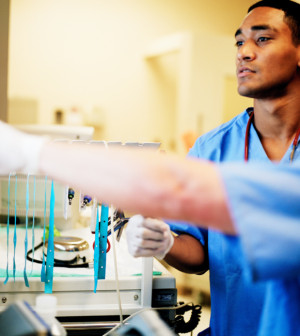- Navigating Your Midlife Crisis: Embracing New Possibilities
- City Raccoons Showing Signs of Domestication
- Mapping the Exposome: Science Broadens Focus to Environmental Disease Triggers
- One Week Less on Social Media Linked to Better Mental Health
- Your Brain Changes in Stages as You Age, Study Finds
- Some Suicide Victims Show No Typical Warning Signs, Study Finds
- ByHeart Formula Faces Lawsuits After Babies Sickened With Botulism
- Switch to Vegan Diet Could Cut Your Greenhouse Gas Emissions in Half
- Regular Bedtime Does Wonders for Blood Pressure
- Dining Alone Could Mean Worse Nutrition for Seniors
Health Highlights: Aug. 16, 2016

Here are some of the latest health and medical news developments, compiled by the editors of HealthDay:
Proposed Change Could Improve Liver Transplant Access
A new proposal would mean where Americans live will no longer affect how long they have to wait for a liver transplant.
Currently, some parts of the country have fewer available livers for transplant and higher demand, such as California and New York. People in those states tend to have to wait longer for a new liver than someone in South Carolina or Washington state, the Associated Press reported.
If they can afford it, some patients travel to other parts of the country to get on a shorter waiting list.
The United Network for Organ Sharing (UNOS), which runs the nation’s transplant system, wants to change how donated livers are distributed so patients don’t need to leave home to boost their chances of getting a new liver.
“We want to make sure we give everyone a fair opportunity to get a liver transplant,” said Dr. Ryutaro Hirose, chairman of the liver transplant committee at UNOS, told the AP. “It’s pretty much long overdue.”
More than 14,600 people in the U.S. are waiting for a new liver. Just over 7,100 received one last year, but more than 1,400 died waiting.
“There’s a huge difference in the risk of death on that waiting list depending on where you live,” Hirose, a transplant surgeon at the University of California, San Francisco, told the AP.
Changing the boundaries that determine where a liver is first offered to patients “matches better the organ supply and demand,” Hirose said.
Under the proposal, the nation would be divided into eight new districts for liver transplants. Doing so would enable wider sharing of donated livers and lead to a better mix of regions where potential donors live and those with longer waiting lists, the AP reported.
The proposed change, which will be open for public comment through mid-October, could face opposition because some transplant centers with shorter wait lists don’t want those lists to get longer.
However, the proposal is welcomed by the transplant chief at a leading liver center.
“The distribution of organs is not a right, it’s a gift. We want to try to allocate that gift in the most fair way possible, the way that does the greatest good,” Dr. Abhinav Humar of the University of Pittsburgh Medical Center, told the AP.
He was not involved in developing the proposed change.
Copyright © 2025 HealthDay. All rights reserved.










